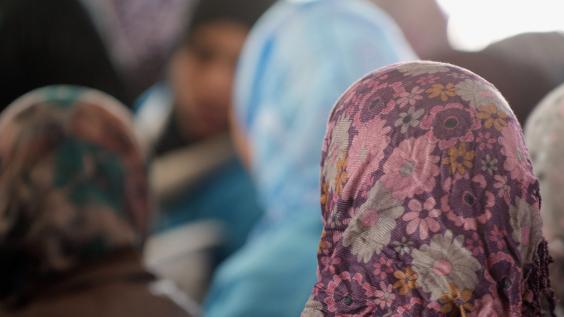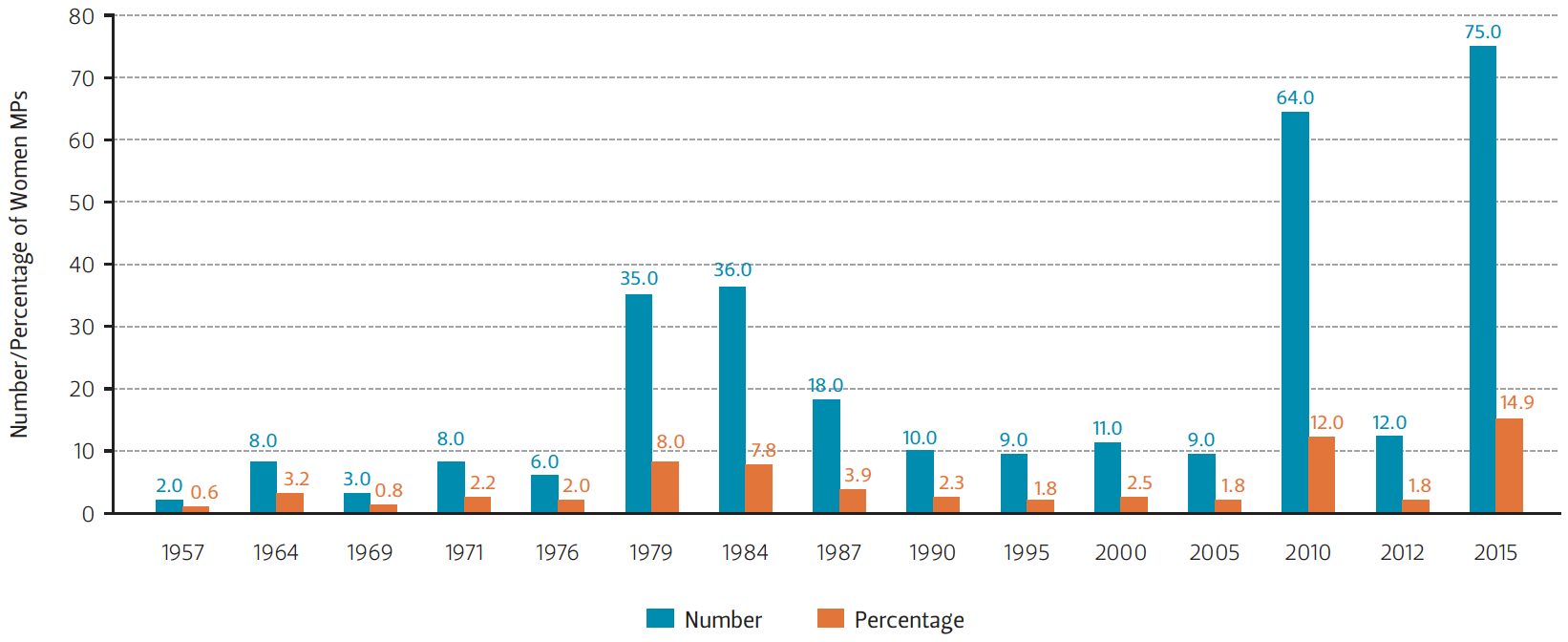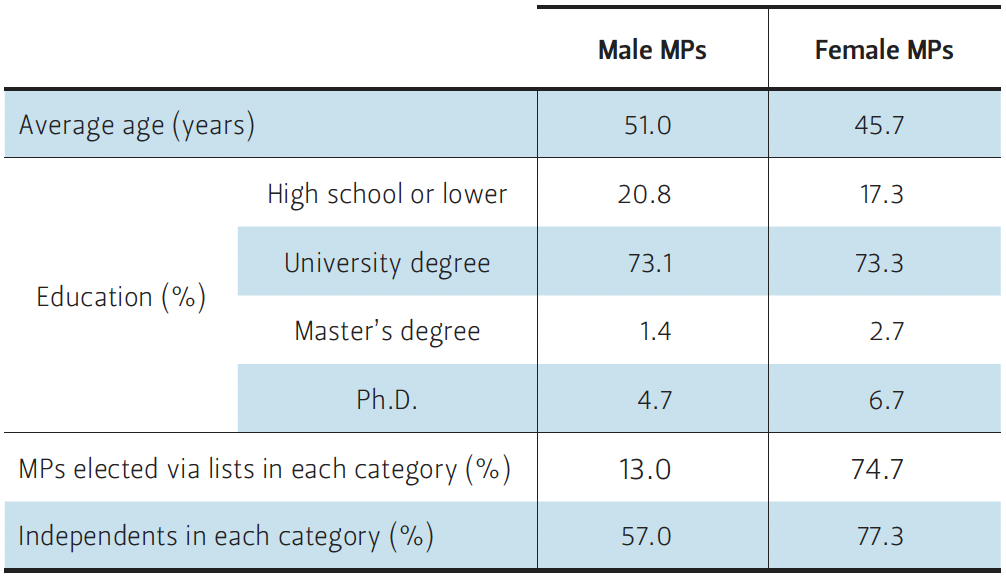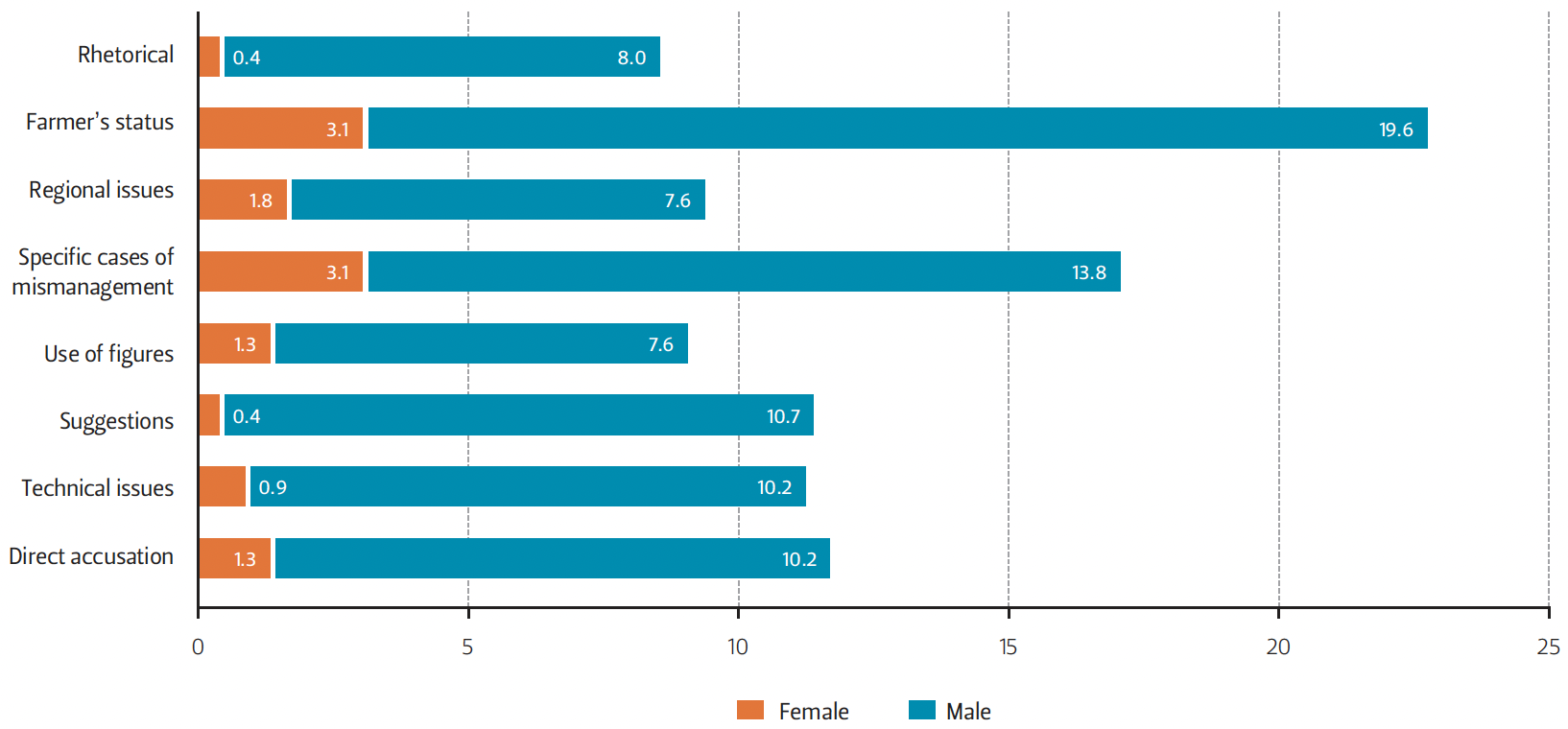Women in the Egyptian Parliament: A Different Agenda?

Table of Contents
Author(s)
Mazen Hassan
Cairo UniversityShare this Publication
- Download PDF
- Print This Publication
- Cite This Publication Copy Citation
Hassan, Mazen. 2018. Women in the Egyptian Parliament: A Different Agenda? Issue brief no. 09.02.18. Rice University’s Baker Institute for Public Policy, Houston, Texas.
How much of a difference does it make to increase women’s political representation beyond their traditional levels? How significant is the role of quotas in facilitating this change? In this brief, I offer a summary of recent research conducted on these questions in the context of Egypt.
Although Egypt had been a regional pioneer in women’s parliamentary representation in the 1950s, it has since lagged behind, with an average female representation of between 2% and 3%. The exceptions were the 1979, 1984, and 2010 parliaments, which each introduced female quotas and yielded female representation of 8%, 7.8%, and 12%, respectively.1 It was only in 2015 that women achieved a historic increase in legislative representation, securing 14.9% of seats in parliament (Figure 1). A total of 75 women were elected to Egypt’s House of Representatives (out of a possible 568 seats), a change mostly driven by gender quotas. An additional 14 women were appointed by the president, bringing the total of women MPs to 89 in the current Egyptian parliament. A content analysis of key parliamentary sessions in 2015 and 2016 reveals that this political experiment has had significant implications.
Women’s Representation on a Global Scale
Previous research on the effects of greater women’s political representation around the world has yielded several significant findings. First, quotas matter in increasing women’s representation. Without quotas, women still find it quite difficult to obtain parliamentary seats in both majoritarian and proportional representation systems.2 Second, female legislators have an impact on parliamentary debates. A pronounced focus on issues such as education, health care, and inequality—topics termed “soft issues”—is one such example.3 Lastly, female parliamentarians dedicate their efforts to feminist issues such as women’s political rights and maternity benefits. Women parliamentarians who serve in environments where they were traditionally underrepresented tend to live up to society’s expectations of them as “representatives of women” and therefore champion feminist issues.4
The Status of Egyptian Women's Sociopolitical Participation
Egypt’s 2014 constitution granted women significant gains in terms of gender equality. Their legislative representation increased sevenfold, and their participation in the cabinet increased threefold compared to the pre-2014 period (Figure 1). From a socioeconomic perspective, however, there is still much room for improvement. Women’s participation in the workforce, for example, remains low, ranging between 20% and 25% compared to a global average of 52%. Only 14% of women ages 15 to 59 are employed or self-employed, compared to 83% of men.5
In terms of education, around 21% of women between the ages of 15 and 59 have never attended school, compared to 8% of men in that age range. Egypt ranks 136th out of 145 countries in gender equality according to the World Economic Forum’s Global Gender Gap Report 2015.6 These statistics indicate that there is significant room for improvement in Egyptian women’s inclusion in society if women’s issues and rights are to be emphasized in public debates, with parliamentary debates at the forefront.
Figure 1 — Women’s Representation in Egyptian Parliaments (1957–2015)

Demographic Backgrounds of Egyptian Female MPs
A comparison of the backgrounds of female and male MPs showed that female MPs are younger on average, have a slightly better educational background, and are less partisan than their male counterparts.7 A statistical analysis (t-test) revealed that the gender quota was found to be a statistically significant driver behind women’s increased representation in the 2015 election.
What Issues Do Female Egyptian MPs Focus On?
A content analysis was performed on the official transcripts of three topics discussed by the 2015 parliament. The topics were selected to ensure diversity (i.e., to include both women- and non-women-specific issues, and to address political, economic, and social issues) and saliency (i.e., topics that mattered to MPs and also attracted media attention at the time). The topics included an economic issue (the 2016- 2017 budget bill), a women-specific issue (toughening sentences against individuals performing female genital mutilation—FGM), and a political oversight issue (questioning the minister of supplies on the wheat sales and storage system). These three topics were discussed over 21 parliamentary sessions. A total of 147 MPs spoke on all three topics, of which 19 were female.8
Data indicate that female MPs were almost equally as active as male MPs in proportion to their total number in parliament when speaking on these topics (they made up 14.9% of all MPs and 13% of the speakers on the three topics). Of the three topics examined, female MPs were most active on the topic directly addressing women’s issues (FGM), making up 20% of the MPs who spoke on the issue. Second in line was the budget bill (12.8%), followed by the wheat sales and storage regime topic (10.2%).
Table 1 — Backgrounds of Female and Male MPs Elected to the 2015 Egyptian Parliament

With regard to budget discussions, although only 10 out of the 78 female MPs participated in these deliberations, some interesting observations can be made. The topics female MPs focused on the most were health care (28.6% of all paragraphs attributed to female MPs on the subject addressed health care issues), followed by education (16.1%), and welfare and the deficit, which drew equal attention (12.5% each). Male MPs on the other hand focused more on government criticisms (26.3% of the paragraphs attributed to male MPs on the topic), the deficit (14.6%), and subsidies (10.9%). It is quite interesting to see that female MPs devoted significant attention to the deficit, with a focus on the fear of burdening the younger generations. This focus seems to fit the picture painted by previous studies that female MPs are likely to extend their role as mothers to a similar role for the broader population. A statistical comparison of the number of interventions made by female and male MPs on each budget sub-topic reveals that women made different contributions than men on three topics: health care, women’s issues, and government oversight. On both health care and women’s issues (e.g., providing more financial support to single mothers), women spoke significantly more than men, yet they were significantly less likely to criticize the government than men. It is also quite intriguing to see that none of the male MPs spoke on women’s issues during budget discussions.
Figure 2 — Interventions on Wheat Sales and Storage, by Gender (%)

On the bill related to FGM sentencing, male and female MPs used interventions9 to declare their opposition to the practice (21.6% of all paragraphs), call for tougher sentences against practitioners (15.7%), or use feminist arguments to debate against FGM (13.7%). Around 25% of all paragraphs were attributed to female MPs (who represent 15% of all of parliamentary members) whereas the rest were attributed to male MPs. Female MPs primarily voiced disapproval of FGM (23% of all paragraphs attributed to female MPs) and used feminist arguments against the bill (also 23%).10 Two interesting results stand out. No single female MP endorsed FGM. Second, when arguing against FGM, female MPs were almost three times more likely to use feminist arguments than religious or scientific ones (a difference significant at the 90% confidence level), indicating that women chose to deal with the topic primarily from a feminist perspective.
Finally, when discussing the topic of wheat sales and storage, empirical analyses revealed no statistically significant difference in perspectives between male and female MPs. One way to interpret this result is to deduce that female MPs addressed non-women’s issues in the same way as men. Female representatives were equally capable of addressing even “dry” or “hard” bread-and-butter topics with the same depth and level of sophistication as male MPs.
Looking Ahead
More than 150 years ago, philosopher John Stuart Mill described losing the representation of women and their talents in society as an exercise of non-utilitarian irrationality.11 Beyond arguments that favor greater representation of women in the political arena on the grounds of fairness and symbolism, the evidence above confirms that women’s representation is substantively important as well. Women make unique contributions to politics and advance a distinctive agenda. The empirical evidence presented in this brief also offers partial support for critical mass theory, in that women’s representation beyond a certain threshold gives women in parliament greater solidarity and impetus to act together and stand up for women’s rights.
To sustain these changes, upholding—or possibly increasing—the female legislative quota would be a step in the right direction. Moreover, some aspects of election laws make it more difficult for women to campaign and could benefit from reform, especially regarding elections in which numerous majoritarian seats are contested. Examples include excessive—and sometimes difficult to monitor—campaign spending, geographically large majoritarian districts, and women’s underrepresentation in bodies that supervise elections. Additionally, if more women are appointed to key executive positions, their presence in public and political life could become a “new normal.” While Egypt did make some recent progress in this area by appointing women to key cabinet positions, applying such a strategy to other levels of the bureaucracy would make a difference.
Endnotes
1. The 2010 parliament, however, lasted for only two months and was dissolved after the 2011 uprising.
2. P. Norris, Electoral Engineering: Voting Rules and Political Behavior (New York: Cambridge University Press, 2004); and Mona Lena Krook, Quotas for Women in Politics: Gender and Candidate Selection Reform Worldwide (New York: Oxford University Press, 2009).
3. S. Franceschet and J.M. Piscopo, “Gender Quotas and Women’s Substantive Representation: Lessons from Argentina,” Politics & Gender 4 (2008): 393–425; and J.A. McDonald and E.E. O’Brien, “Quasi-Experimental Design, Constituency, and Advancing Women’s Interests: Reexamining the Influence of Gender on Substantive Representation,” Political Research Quarterly 64 (2011): 472–86.
4. R. Heath, L. Schwindt-Bayer, and M.M. Taylor-Robinson, “Women on the Sidelines: The Rationality of Isolating Tokens,” American Journal of Political Science 49 (2005): 420–36; and W. Smooth, “Standing for Women? Which Women? The Substantive Representation of Women’s Interests and the Research Imperative of Intersectionality,” Politics & Gender 7 (2011): 436–41.
5. Egypt Health Issues Survey 2015 (Cairo, Egypt: Ministry of Health and Population; and Rockville, Maryland: ICF International, 2015).
6. See World Economic Forum, Global Gender Gap Report 2015, http://reports.weforum.org/global-gender-gap-report-2015/. Accessed on December 15, 2017.
7. In this analysis, only elected female MPs were considered.
8. The unit studied for the content analysis was the paragraph. In total, the parliamentary scripts of the three topics included 516 paragraphs.
9. Other tools include: motion of asking a minister, request to deliver an urgent speech, and request to form a fact-finding mission. All these tools, however, are less powerful than questioning a minister, which is the only measure that can lead to a no-confidence vote.
10. For example, one female MP said that FGM represents “violence against women because it capitulates part of her body” [Plenary Session no. 95 (August 31, 2016), 12], whereas another stated that “it is mere violence against women” [Plenary Session no. 95 (August 31, 2016), 14]. Interestingly, a third female MP—who is a professor of creed and philosophy at Al-Azhar University—also used feminist remarks in calling for male MPs to “respect women and stop constraining, intimidating, or hurting us” [Plenary Session no. 95 (August 31, 2016), 23-24].
11. John Stuart Mill, The Subjection of Women, ed. Susan Orkin (Cambridge: Hackett, 1869; 1988).
This material may be quoted or reproduced without prior permission, provided appropriate credit is given to the author and Rice University’s Baker Institute for Public Policy. The views expressed herein are those of the individual author(s), and do not necessarily represent the views of Rice University’s Baker Institute for Public Policy.


